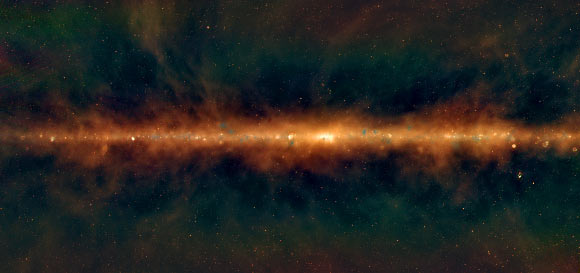Astronomers Discover 27 New Supernova Remnants in Milky Way | Astronomy – Sci-News.com
An international team of astronomers has detected 27 new supernova remnants using a data release of the GaLactic and Extragalactic All-sky MWA survey (GLEAM) from the Murchison Widefield Array (MWA), a low-frequency radio telescope at the Murchison Radio-astronomy Observatory (MRO) in Western Australia.

These are the 27 newly-discovered supernova remnants. The MWA radio images trace the edges of the explosions as they continue their ongoing expansion into interstellar space. Some are huge, larger than the full Moon, and others are small and hard to spot in the complexity of the Milky Way. Image credit: Natasha Hurley-Walker, ICRAR & Curtin / GLEAM Team.
The GLEAM survey maps the sky using radio waves at frequencies between 72 and 231 MHz and has a resolution of two arcminutes (about the same as the human eye).
“It’s the power of this wide frequency range that makes it possible for us to disentangle different overlapping objects as we look toward the complexity of the Galactic center,” said Dr. Natasha Hurley-Walker, an astrophysicist at the Curtin University node of the International Centre for Radio Astronomy Research (ICRAR).
“Essentially, different objects have different ‘radio colors,’ so we can use them to work out what kind of physics is at play.”
Using the MWA images, Dr. Hurley-Walker and colleagues discovered the remnants of 27 massive stars that exploded in supernovae.
These stars would have been eight or more times more massive than our Sun before their dramatic destruction thousands of years ago.

This MWA radio image shows a new view of the Milky Way, with the lowest frequencies in red, middle frequencies in green, and the highest frequencies in blue. Huge golden filaments indicate enormous magnetic fields, supernova remnants are visible as little spherical bubbles, and regions of massive star formation show up in blue. The supermassive black hole at the center of our Galaxy is hidden in the bright white region in the center. Image credit: Natasha Hurley-Walker, ICRAR & Curtin / GLEAM Team.
“One of the newly-discovered supernova remnants lies in such an empty region of space, far out of the plane of our Galaxy, and so despite being quite young, is also very faint,” Dr. Hurley-Walker said.
“It’s the remains of a star that died less than 9,000 years ago, meaning the explosion could have been visible to Indigenous people across Australia at that time.”
Two of the supernova remnants discovered are quite unusual ‘orphans,’ found in a region of sky where there are no massive stars, which means future searches across other such regions might be more successful than astronomers expected. Other supernova remnants discovered in the research are very old.
“This is really exciting for us, because it’s hard to find supernova remnants in this phase of life — they allow us to look further back in time in the Milky Way,” Dr. Hurley-Walker said.
The discovery is reported in three papers in the Publications of the Astronomical Society of Australia.
_____
N. Hurley-Walker et al. 2019. New candidate radio supernova remnants detected in the GLEAM survey over 345° < l < 60°, 180° < l < 240°. Publications of the Astronomical Society of Australia 36: E045; doi: 10.1017/pasa.2019.34
N. Hurley-Walker et al. 2019. Candidate radio supernova remnants observed by the GLEAM survey over 345° < l < 60° and 180° < l < 240°. Publications of the Astronomical Society of Australia 36: E048; doi: 10.1017/pasa.2019.33
N. Hurley-Walker et al. 2019. GaLactic and Extragalactic All-sky Murchison Widefield Array (GLEAM) survey II: Galactic plane 345° < l < 67°, 180° < l < 240°. Publications of the Astronomical Society of Australia 36: E047; doi: 10.1017/pasa.2019.37





